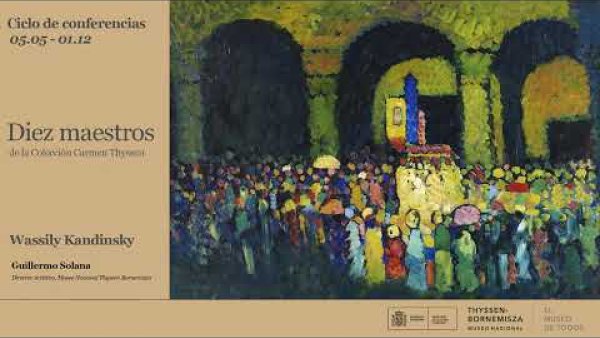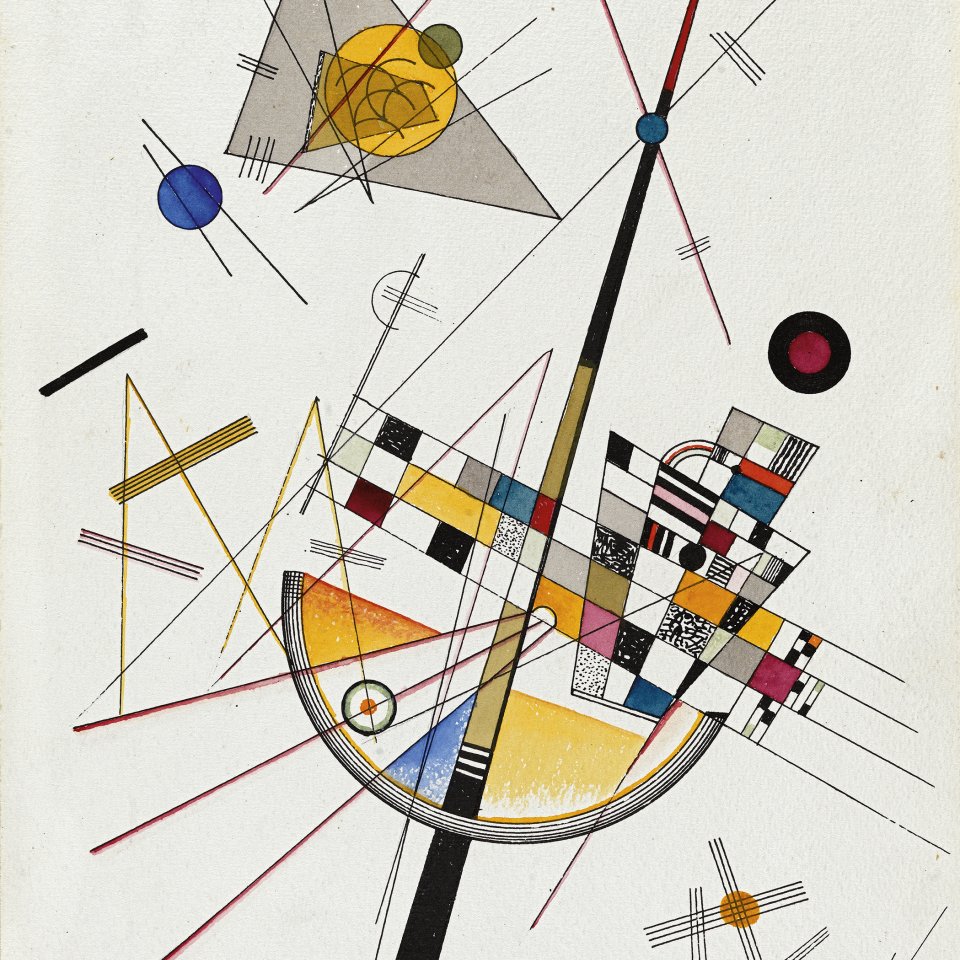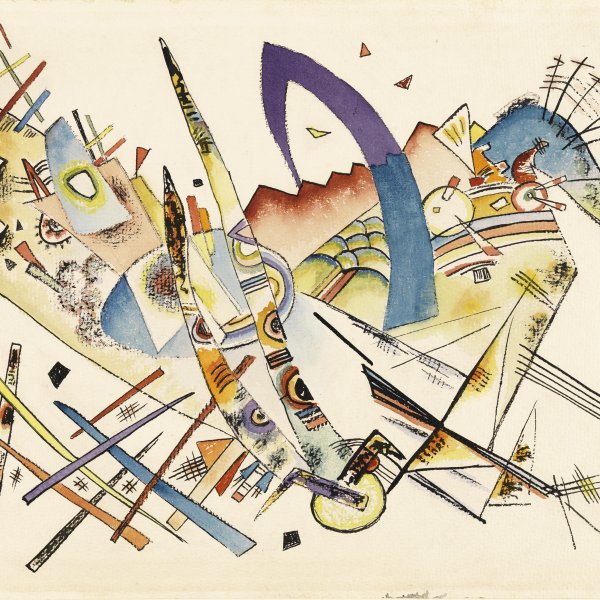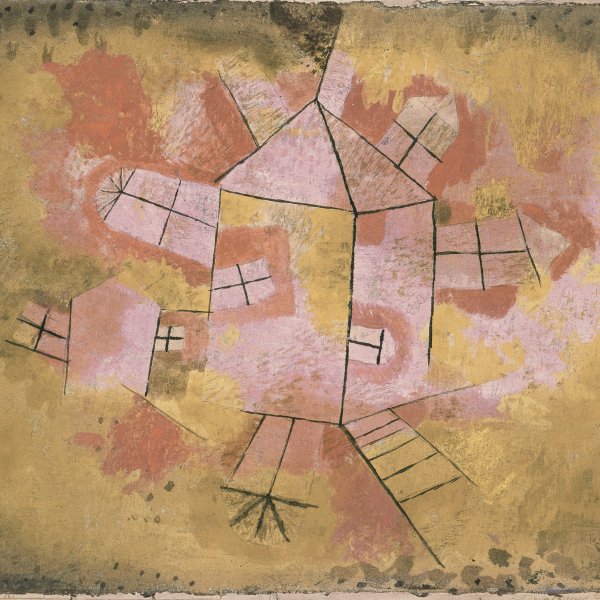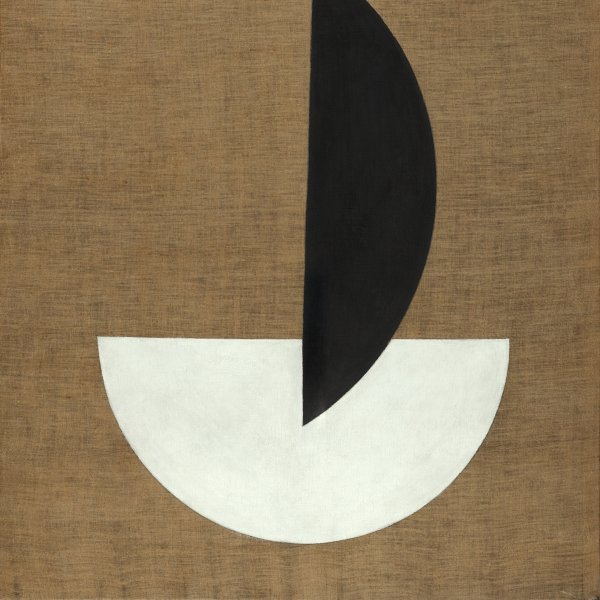Delicate Tension. No. 85
Recorded as number 85 in the handwritten list compiled by the artist, Zarte Spannung (Delicate Tension) belongs to a large series of watercolours with imaginative titles dated between 1922 and 1923. Two of the set are very similar to the present work in both style and format: Bright Sound and Free Relationship, also painted in July that year. In all three colour is relegated to filling in certain forms and takes on colder hues than in previous periods; what is more, the markedly geometric compositions appear to have been drawn with a ruler and compasses.
Delicate Tension was executed by Kandinsky at the Bauhaus during the prestigious school’s most rationalist period under the directorship of Theo van Doesburg, from 1923 to 1925. During these years the initial Expressionistic style of this avant-garde centre evolved towards greater commitment to the Constructivist aesthetic which was spreading internationally. Kandinsky delved more deeply in his investigation of the correspondences between forms and colours, and the geometric shapes found in his works from this period, which is sometimes described as “cold, ” are basically the circle and the triangle, which he considered to be “the two primary, most strongly contrasting plane figures.”
The abstract painter Rudolf Bauer (1889–1953), who belonged to the circle of the Der Sturm gallery in Berlin, acquired the present watercolour in 1929, through the Galerie Ferdinand Möller, and a few years later, in 1936, it passed to Baroness Hilla Rebay. In 1930, Rebay, who was involved in a relationship with Bauer, established the non-Objective private art museum in Berlin called Das Geistreich (The realm of the spirit), closed by the Nazis in 1937, where his exhibition Werke von Kandinsky und Bauer was shown in 1932. After emigrating to the United States, she became the director and curator of the new Solomon R. Guggenheim Foundation and the organiser of the exhibition entitled The Solomon R. Guggenheim Collection of Non-Objective Paintings at the Gibbes Memorial Art Gallery in Charleston, which included the present watercolour as part of the Guggenheim collection, to which it belonged from 1936 to 1971.
Paloma Alarcó

